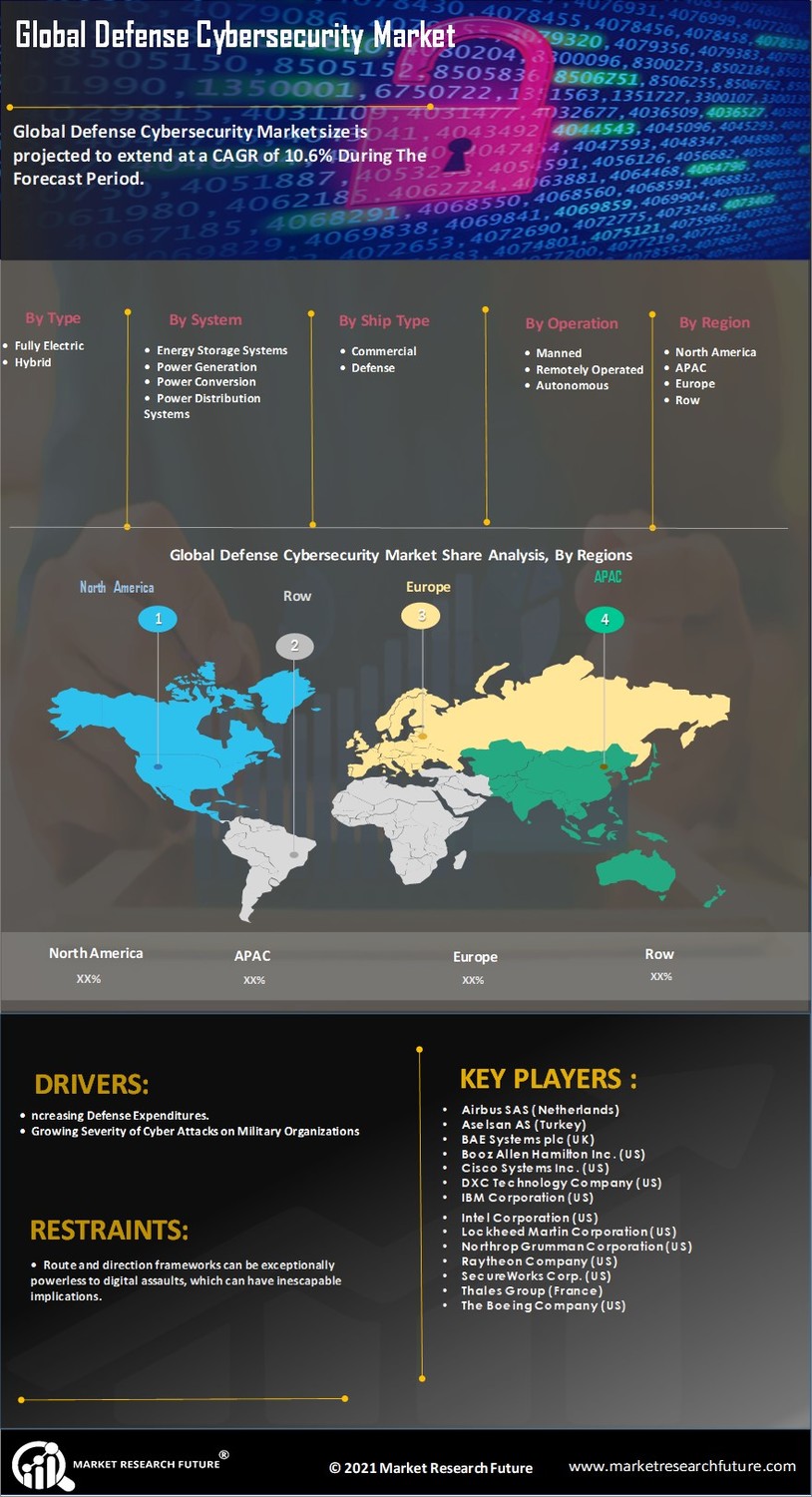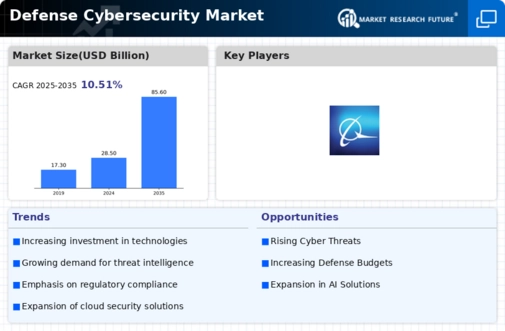North America : Leading Defense Cybersecurity Market
North America is poised to maintain its leadership in the Defense Cybersecurity Market, holding a significant market share of 10.0 in 2025. The region's growth is driven by increasing defense budgets, heightened cyber threats, and stringent regulatory frameworks. Government initiatives aimed at enhancing national security and protecting critical infrastructure further fuel demand for advanced cybersecurity solutions. The focus on innovation and technology adoption is also a key catalyst for market expansion.
The competitive landscape in North America is robust, featuring major players such as Northrop Grumman, Raytheon Technologies, and Lockheed Martin. These companies are at the forefront of developing cutting-edge cybersecurity technologies tailored for defense applications. The presence of a strong defense industrial base, coupled with significant investments in R&D, positions the region as a hub for cybersecurity innovation. As threats evolve, the demand for comprehensive cybersecurity solutions is expected to grow, solidifying North America's market dominance.
Europe : Emerging Cybersecurity Powerhouse
Europe is rapidly evolving into a significant player in the Defense Cybersecurity Market, with a market size of 5.5 in 2025. The region's growth is driven by increasing awareness of cyber threats, regulatory mandates, and collaborative defense initiatives among EU member states. The European Union's focus on cybersecurity resilience and the implementation of the Cybersecurity Act are pivotal in shaping the market landscape, fostering innovation and investment in defense cybersecurity solutions.
Leading countries such as the UK, France, and Germany are at the forefront of this transformation, with key players like BAE Systems and Thales Group driving advancements in cybersecurity technologies. The competitive landscape is characterized by a mix of established defense contractors and emerging tech firms, all vying for a share of the growing market. As Europe enhances its cybersecurity capabilities, the demand for integrated solutions is expected to rise, further solidifying its position in the global market.
Asia-Pacific : Growing Cybersecurity Landscape
Asia-Pacific is witnessing a burgeoning Defense Cybersecurity Market, projected to reach a size of 3.5 in 2025. The region's growth is fueled by increasing defense expenditures, rising cyber threats, and a growing emphasis on national security. Countries are investing heavily in cybersecurity infrastructure and capabilities, driven by both government initiatives and private sector innovation. The demand for advanced cybersecurity solutions is expected to surge as nations prioritize the protection of critical assets and information.
Key players in the region include L3Harris Technologies and Cisco Systems, with countries like Japan, Australia, and India leading the charge in cybersecurity advancements. The competitive landscape is diverse, featuring a mix of local and international firms. As the region grapples with evolving cyber threats, the focus on collaboration and information sharing among nations is becoming increasingly important, paving the way for a more secure cyber environment.
Middle East and Africa : Emerging Cybersecurity Frontier
The Middle East and Africa are emerging as a critical frontier in the Defense Cybersecurity Market, with a projected size of 0.7 in 2025. The region's growth is driven by escalating cyber threats, geopolitical tensions, and a growing recognition of the importance of cybersecurity in national defense strategies. Governments are increasingly investing in cybersecurity initiatives to protect critical infrastructure and sensitive information, spurred by both domestic and international pressures.
Countries like the UAE and South Africa are leading the way in adopting advanced cybersecurity measures, with a focus on building local capabilities and fostering partnerships with global cybersecurity firms. The competitive landscape is evolving, with both established players and new entrants vying for market share. As the region continues to develop its cybersecurity framework, the demand for innovative solutions is expected to rise, enhancing overall defense capabilities.

















Leave a Comment